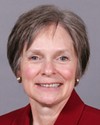Thank you, Mr. Chair, and I want to thank all the witnesses for coming.
I guess I can't help but react to Professor Franks by saying that I really don't think this has been a partisan issue, and I would tell you that I think that some of the widely held presumptions people have made have been dispelled by some of our witnesses. I found it very interesting.
My father was a wholesaler in fruit and vegetables for his whole working career, and he used to always look at retail and say it's the one job he'd never want to have, because there's only a certain amount of business: whether you're open eight hours a day or 12 hours a day or 24 hours a day, there's only so much business you can have.
I looked at this suggestion of having two election days, two polling days back-to-back, rather than simply another opportunity for an advanced poll. I would tell you that we have experts here saying that it may raise the voter turnout by 2%, and I think it was Mr. Loewen or Mr. Archer who talked about the fact that you have to look at sort of the cost-benefit analysis. Maybe it was Mr. Archer.
So this is going to cost us $34 million. What we've heard from Elections Canada and other people is that they're having trouble getting both volunteers and paid people—whether it was partisan reaction from our party representatives or Elections Canada—to come and work on the polling days and the advance polling days we now have.
Given the price tag of $34 million, my question would be: Are we simply going to spread out the voters who now come, so maybe we'll get 60% or 62%, but they will now say “Well, maybe I'll go Sunday or maybe I'll go Monday”? Or are we better off to look at different innovations, different ways to increase voter turnout that would appeal to the young people, the 18 to 36 age group, who seem to be vastly under-represented, as well as the children of new Canadians who don't seem to be coming out to vote?
My question is to everyone who chooses to answer. For $34 million, I haven't seen demonstrated that this will necessarily increase voter participation. If that is really the thrust of this piece of legislation, can any of you give us input on other aspects of voting that we could look at that may indeed get us a greater return for that $34 million and the 2% it might possibly bring in?

